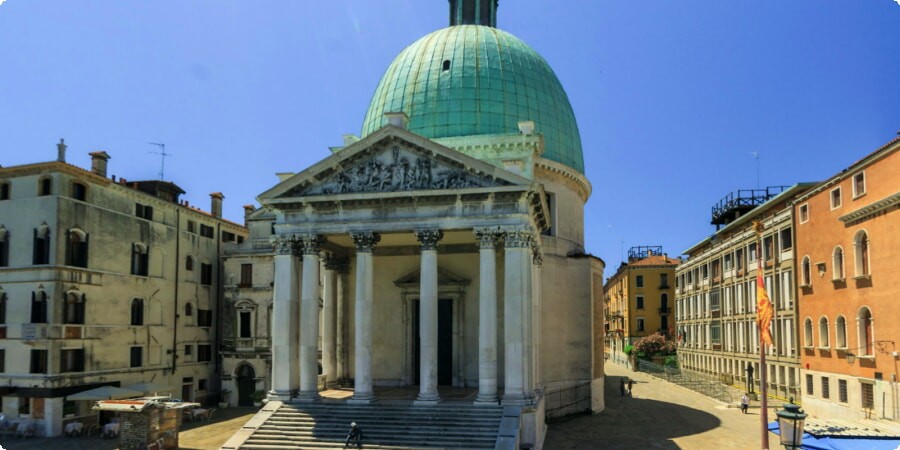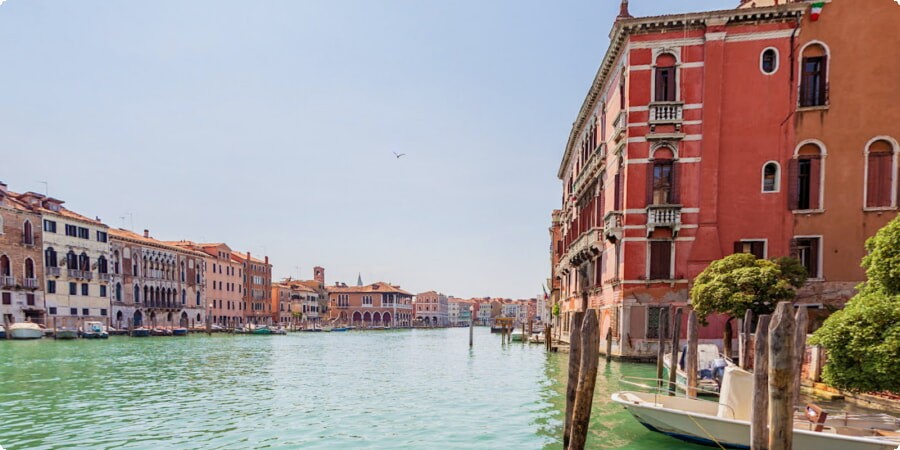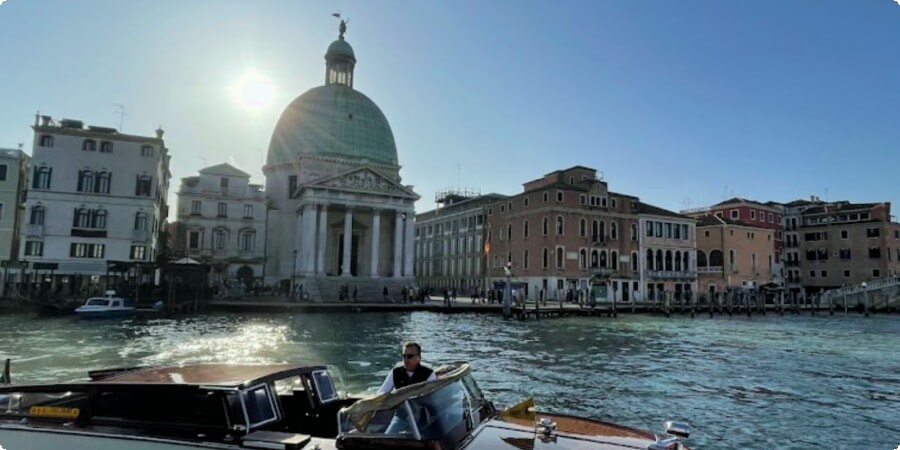A Journey Through Time: The History of Venice's Grand Canal
Welcome to Venice, the floating city of romance and intrigue, where every waterway tells a story and every bridge whispers secrets of the past. At the heart of this enchanting city lies the Grand Canal, a winding waterway that weaves its way through the labyrinthine streets and timeless beauty of Venice. In this article, we invite you to embark on a journey through time as we unravel the rich history and cultural significance of Venice's Grand Canal.
Origins and Development
Centuries ago, in a marshy lagoon on the Adriatic Sea, the foundations of Venice were laid. The Grand Canal, which now serves as the city's main artery, began its humble existence as a shallow tidal estuary, slowly carved by the erosive forces of nature. As human settlers arrived and established communities in the area, the canal evolved into a vital waterway, connecting the various islands of the Venetian archipelago.
Over time, the Grand Canal grew in size and importance, shaped by the hands of countless laborers who dredged its waters and lined its banks with sturdy palaces and bustling marketplaces. By the Middle Ages, Venice had risen to prominence as a maritime power, and the Grand Canal emerged as the bustling thoroughfare that we know today, teeming with gondolas, barges, and trading ships from distant lands.
Medieval Venice: Rise of the Serenissima
During the medieval period, Venice blossomed into a wealthy and powerful city-state known as the Serenissima Republica, or Most Serene Republic. At the heart of this maritime empire lay the Grand Canal, which served as the lifeblood of Venetian society, facilitating trade, transportation, and cultural exchange.

Along the shores of the Grand Canal rose magnificent palaces and ornate churches, each a testament to the wealth and influence of Venice's noble families. The Rialto Bridge, one of the oldest and most iconic bridges spanning the Grand Canal, became a bustling center of commerce, where merchants from across Europe and the East gathered to buy, sell, and barter their wares.
For travelers seeking to explore the enchanting streets and waterways of Venice, renting a car can be a convenient and hassle-free option. Cars Scanner offers a wide range of rental car options in Venice, allowing visitors to explore the city and its surrounding areas at their own pace. Book your rental car in Venice through Cars Scanner's website at Rent Car in Venezia and embark on a journey through the timeless beauty of Venice's Grand Canal.
Renaissance Splendor: Architectural Flourishes Along the Canal
The Renaissance era ushered in a period of unparalleled artistic and architectural achievement in Venice, and the Grand Canal became a canvas for the city's most celebrated architects and designers. Along its shores, magnificent palaces and churches adorned with intricate facades and graceful arches rose to prominence, reflecting the wealth and sophistication of Venice's elite.
-
Palaces Along the Canal: The Grand Canal is lined with a breathtaking array of palaces, each more opulent than the last. Palazzo Barbaro, Palazzo Dario, and Palazzo Grimani are just a few examples of the exquisite Renaissance palaces that grace the canal's banks, their elegant facades and ornate interiors bearing witness to the grandeur of Venice's golden age.
-
Churches and Religious Institutions: In addition to palaces, the Grand Canal is also home to several magnificent churches and religious institutions. The Basilica di Santa Maria della Salute, with its majestic dome and marble façade, is a testament to the city's devotion to the Virgin Mary and a symbol of hope and resilience in the face of adversity.
-
Bridges and Waterfront Squares: The Grand Canal is punctuated by a series of iconic bridges and waterfront squares that serve as gathering places for locals and tourists alike. The Rialto Bridge, with its elegant arches and bustling market stalls, is a favorite spot for visitors to soak up the vibrant atmosphere of Venice's historic center.
For travelers looking to explore the beauty of Venice and its surrounding regions, renting a car in Italy is a convenient and flexible option. Cars Scanner offers a wide range of rental car options in Italy, allowing travelers to experience the freedom of the open road while exploring the country's rich cultural heritage. Book your rental car in Italy through Cars Scanner's website at Rent Car in Italy and embark on an unforgettable journey through the breathtaking landscapes and historic landmarks of this enchanting country.

The Age of Exploration: Venice's Golden Era
During the Age of Exploration, Venice reached the pinnacle of its power and prosperity, thanks in no small part to the Grand Canal's strategic location as a gateway to the East. The canal became a bustling thoroughfare for merchants and traders from across Europe and the Mediterranean, carrying goods and treasures from distant lands to Venice's storied shores.
-
Trade and Commerce: The Grand Canal was the lifeblood of Venice's economy during this golden era, serving as the main artery through which goods such as spices, silks, and precious metals flowed into the city. The bustling waterfront markets and trading posts along the canal buzzed with activity, as merchants haggled and bargained over exotic goods from the far reaches of the known world.
-
Cultural Exchange: In addition to trade, the Grand Canal also facilitated cultural exchange between Venice and the East. The city's rich artistic heritage was enriched by the arrival of master craftsmen and artisans from Byzantium, who brought with them new techniques and styles that would shape Venetian art and architecture for centuries to come.
-
Architectural Splendors: The wealth accumulated through trade and commerce allowed Venice's noble families to commission some of the most spectacular architectural projects in the city's history. Palaces along the Grand Canal were expanded and embellished with lavish decorations, while churches and civic buildings were adorned with exquisite mosaics, frescoes, and sculptures.
Decline and Renewal: Venice in the Modern Era
As the centuries passed and the tides of history shifted, Venice's fortunes began to wane. The discovery of new trade routes and the rise of competing powers in Europe gradually eroded the city's economic dominance, leading to a period of decline and stagnation.

-
Environmental Challenges: Venice's unique location in the heart of the lagoon made it vulnerable to environmental threats such as flooding, erosion, and pollution. Rising sea levels and subsidence exacerbated by human activity posed significant challenges to the city's survival, prompting efforts to protect and preserve its historic landmarks, including the Grand Canal.
-
Urban Development: In the face of these challenges, Venice embarked on a program of urban renewal aimed at revitalizing the city and preserving its cultural heritage. Restoration projects were undertaken to repair and maintain the city's historic buildings and infrastructure, while efforts were made to promote sustainable tourism and reduce the environmental impact of mass visitation.
-
Cultural Revival: Today, Venice is experiencing a cultural revival, with renewed interest in the city's history, art, and architecture driving efforts to protect and celebrate its unique heritage. The Grand Canal remains a symbol of Venice's resilience and enduring beauty, serving as a reminder of the city's storied past and promising future.
Cultural Icon: The Grand Canal in Art and Literature
Throughout history, the Grand Canal has captured the imagination of artists, writers, and poets, who have immortalized its beauty and allure in their works of art and literature.
-
Paintings and Drawings: The shimmering waters and picturesque palaces of the Grand Canal have inspired countless artists throughout the ages. From the luminous landscapes of Canaletto to the romantic vistas of J.M.W. Turner, the canal has been depicted in a myriad of styles and interpretations, each capturing a unique aspect of its timeless charm.
-
Literary Masterpieces: Writers and poets have also been drawn to the Grand Canal, weaving its winding waters and storied shores into the fabric of their literary works. From the haunting tales of Henry James to the lyrical prose of Lord Byron, the canal has served as a backdrop for tales of love, intrigue, and adventure, enriching the literary legacy of Venice and the world.
-
Cultural Influence: The artistic and literary representations of the Grand Canal have had a profound influence on popular culture, shaping perceptions of Venice and its iconic waterway in the collective imagination. Films, music, and even video games have drawn inspiration from the canal, further cementing its status as a cultural icon and symbol of Venetian identity.
Modern-Day Venice: Navigating the Grand Canal
In the modern era, the Grand Canal continues to play a central role in the life of Venice, serving as a vital transportation artery, a bustling thoroughfare for tourists and locals alike, and a symbol of the city's enduring spirit.

-
Transportation Hub: Vaporetti, water taxis, and gondolas ply the waters of the Grand Canal, providing essential transportation services for residents and visitors alike. Whether commuting to work, sightseeing, or simply enjoying a leisurely cruise, navigating the canal offers a unique and unforgettable experience.
-
Tourist Attraction: The Grand Canal is also a major tourist attraction, drawing millions of visitors from around the world each year. Guided tours, boat rides, and gondola cruises offer travelers the chance to explore the canal's historic landmarks, picturesque bridges, and charming waterfront neighborhoods, providing a glimpse into the rich history and culture of Venice.
-
Environmental Concerns: Despite its enduring popularity, the Grand Canal faces significant environmental challenges, including pollution, erosion, and the effects of climate change. Efforts to protect and preserve the canal's fragile ecosystem are underway, but more work is needed to ensure its long-term survival and sustainability.
Legacy and Influence
As we conclude our journey through the history of Venice's Grand Canal, we are reminded of the enduring legacy and influence of this iconic waterway. From its humble origins as a natural watercourse to its transformation into a symbol of Venetian beauty and resilience, the Grand Canal has left an indelible mark on the city and the world.
-
Cultural Heritage: The Grand Canal stands as a testament to Venice's rich cultural heritage and architectural legacy, reflecting centuries of artistic, economic, and social development. Its picturesque vistas and historic landmarks continue to inspire awe and admiration in all who behold them, ensuring that its legacy will endure for generations to come.
-
Symbol of Venice: More than just a waterway, the Grand Canal is a symbol of Venice itself, embodying the city's spirit of innovation, creativity, and resilience in the face of adversity. As Venice navigates the challenges of the modern world, the Grand Canal remains a beacon of hope and a source of inspiration for all who call this enchanting city home.